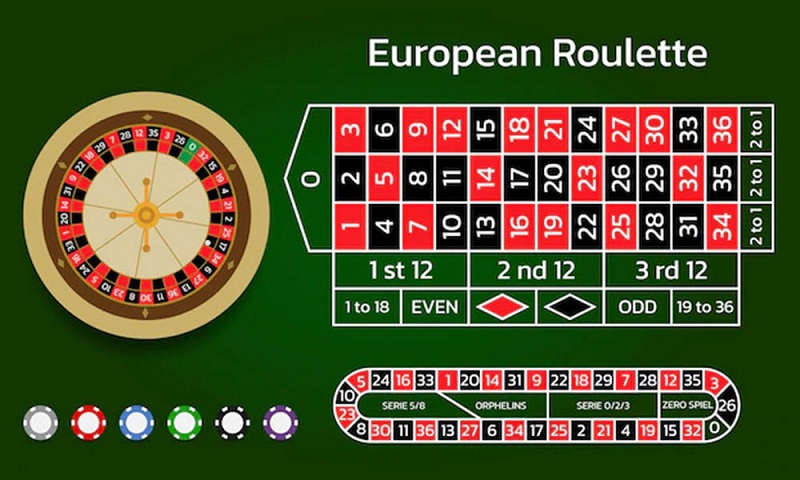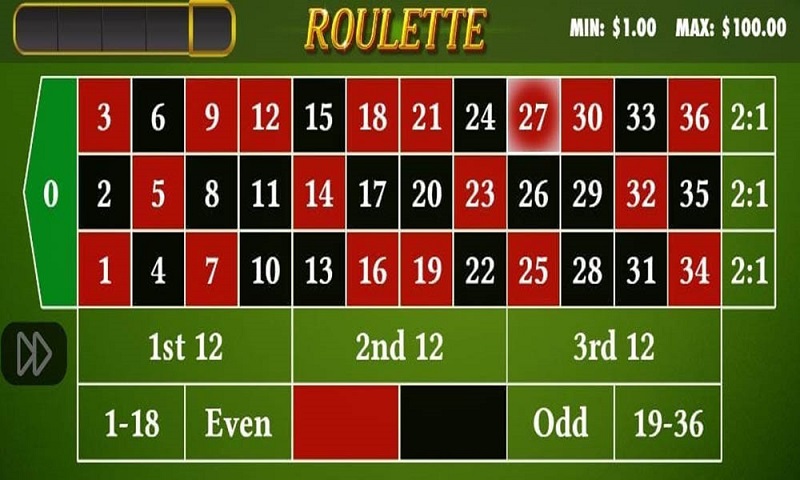D’Alembert Betting Strategy

There are many strategies for successful casino play. Some of them, like the Martingale system, advise you to increase your bets when you lose to compensate for past losses if you win. Others focus on mandatory reduction of your bet after a win. D’Alembert’s strategy is very popular among players; it has combined both of these approaches into a single system.
This strategy has been existing for more than one century. It was developed back in the 18th century by the famous French physicist and mathematician Jean Leron d’Alembert. The pyramid strategy, as it was originally called in gambling circles, is based on the d’Alembert equilibrium principle, which states that events of different polarities should happen with the same frequency. It means that your winning chances in the next round increase more and more with each loss.
D’Alembert Strategy Basic Principles
One of the reasons for this system’s popularity is its extreme simplicity and ease of use. All you need to do is gradually increase your bets when you lose, and reduce them after winning.
The d’Alembert system can be applied only to bets whose winning probability is equal to or as close as possible to 50%. In roulette, these bets are High/Low, Odd/Even, and Red/Black.
Unlike the Martingale strategy, the d’Alembert system does not compensate all the losses that preceded the victory with just one win, since it uses an arithmetic progression rather than a geometric one when the bets rise arithmetically, not exponentially. Therefore, when using it, it may take several rounds to receive profit. However, this is precisely what protects you from draining your bankroll; the smaller the bet, the longer you can play.

Although there are no strategies that guarantee winning in a casino game where the outcome is completely random, the d’Alembert system is able to reduce the house edge.
D’Alembert Betting Rules
The bet shouldn’t exceed 3% of your initial bankroll. When you win, if this is not the first round, you decrease the bet size; in case of a loss, you increase the bet size. The main goal is to reach the profit in the amount of three or four your bets. After that, you can start a new cycle.
Step-by-step algorithm of the game according to the d’Alembert strategy:
- Choose the appropriate outcome for the bet.
- Decide on the bet size, which should vary from 1 to 3% of your bankroll, and take it as a step-by-step amount.
- If you win, subtract it from your current bet.
- If you lose it, add it to your current bet.
- Having won 5-10% of the original cash value, start a new cycle.
The most attractive thing about the D’Alembert system is that you always remain in the black even with the same number of losses and wins within one session.
Example of The D’Alembert Strategy
To start the game, you need to determine the bet size by dividing your bankroll into 30-100 equal parts. For example, your bankroll is $300 and a bet is $10. If the result of the round is unsuccessful, add another $10 to it; if you win, subtract the same amount from it. The table shows a session of 6 rounds.
| Spin | Bet, $ | Result | Bankroll, $ |
|---|---|---|---|
| 1st | 10 | Win | 10 |
| 2nd | 10 | Loss | 0 |
| 3rd | 20 | Loss | -20 |
| 4th | 30 | Loss | -50 |
| 5th | 40 | Win | -10 |
| 6th | 30 | Win | 20 |
As you can see, the player made a profit of x2 their original bet even despite the same amount of wins and losses.
Difference From the Martingale System
Despite the obvious similarity of the D’Alembert system with the Martingale strategy, it is less aggressive due to the use of an arithmetic rather than a geometric progression and the minimum starting bet. This allows you to significantly minimize your losses in case of a long losing session.
The Martingale scheme which involves covering all past failures with just one successful round, can lead to a complete loss of your bankroll in case of a long losing session.
Thus, the D’Alembert strategy is perfect for cautious players who are not ready to risk money for big wins.
Counter D’Alembert
There is also a strategy that is a mirror image of the d’Alembert system; you increase the bets by the same step, but when you win; in case of a loss, you decrease them. This is the most cautious scheme of the game, which minimizes the loss in case of a long losing session. On the other hand, several wins in a row guarantee you a decent profit.
Pros & Cons of the D’Alembert Strategy
The d’Alembert strategy has several serious advantages at once:
- Thanks to the use of an arithmetic progression, it doesn’t require you to have a large bankroll.
- For the same reason, it is considered less risky.
- It’s less susceptible to the influence of dispersion, which makes it possible to remain in the black even despite long losing sessions.
- It is easy to understand and doesn’t require complex calculations to determine the bet size for the game.
However, it also has its downsides. Firstly, the system is designed for bets with a probability of 50%, while in European roulette it is 48.65% at best due to the additional zero sector. In the American version of the roulette, the house edge reaches as much as 5.25%. This leads to a tangible difference between the theoretical profit and the real one.

Secondly, the arithmetic progression reduces not only the risk, but also the profitability of the game. This means that a long losing streak won’t allow you to quickly return the lost money. This may take several winning rounds.
At the same time, as in the case of any other strategy, consistency is fundamentally important to achieve a successful result when applying it. Returning to the original bet after several losses in a row only leads to irretrievable losses that you definitely can’t win back.
Conclusion
The modern theory of probability does not contradict the d’Alembert principle. However, despite the fact that with a million cases of tossing a coin, heads and tails will fall out in a ratio of approximately 50:50, it may well be even 100:0 in the short run, for example, in 10-15 tossings.
The d’Alembert system works great in theory, assuming that wins and losses alternate evenly. In reality, a losing streak can be too long to recoup, even with an arithmetic progression.
Therefore, this strategy won’t save you from the risk of losing money, even though it allows you to reduce the house edge, minimize your losses, and win more often.


